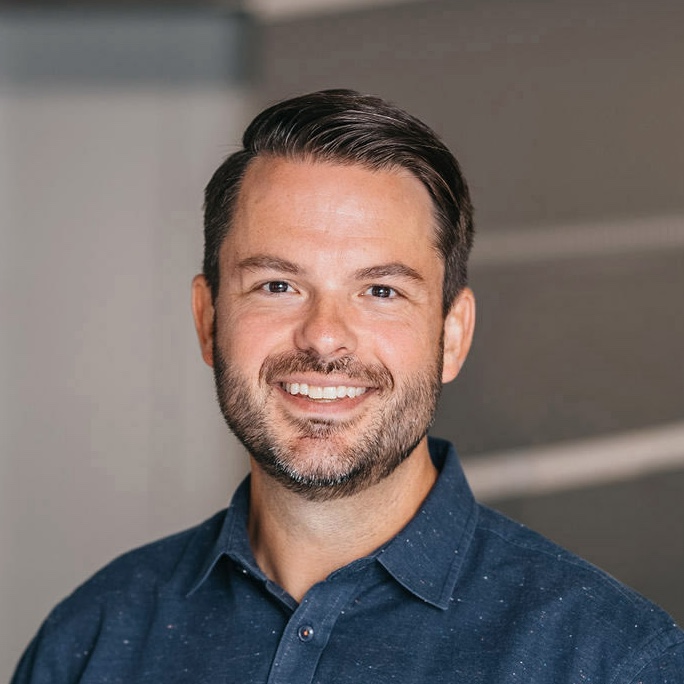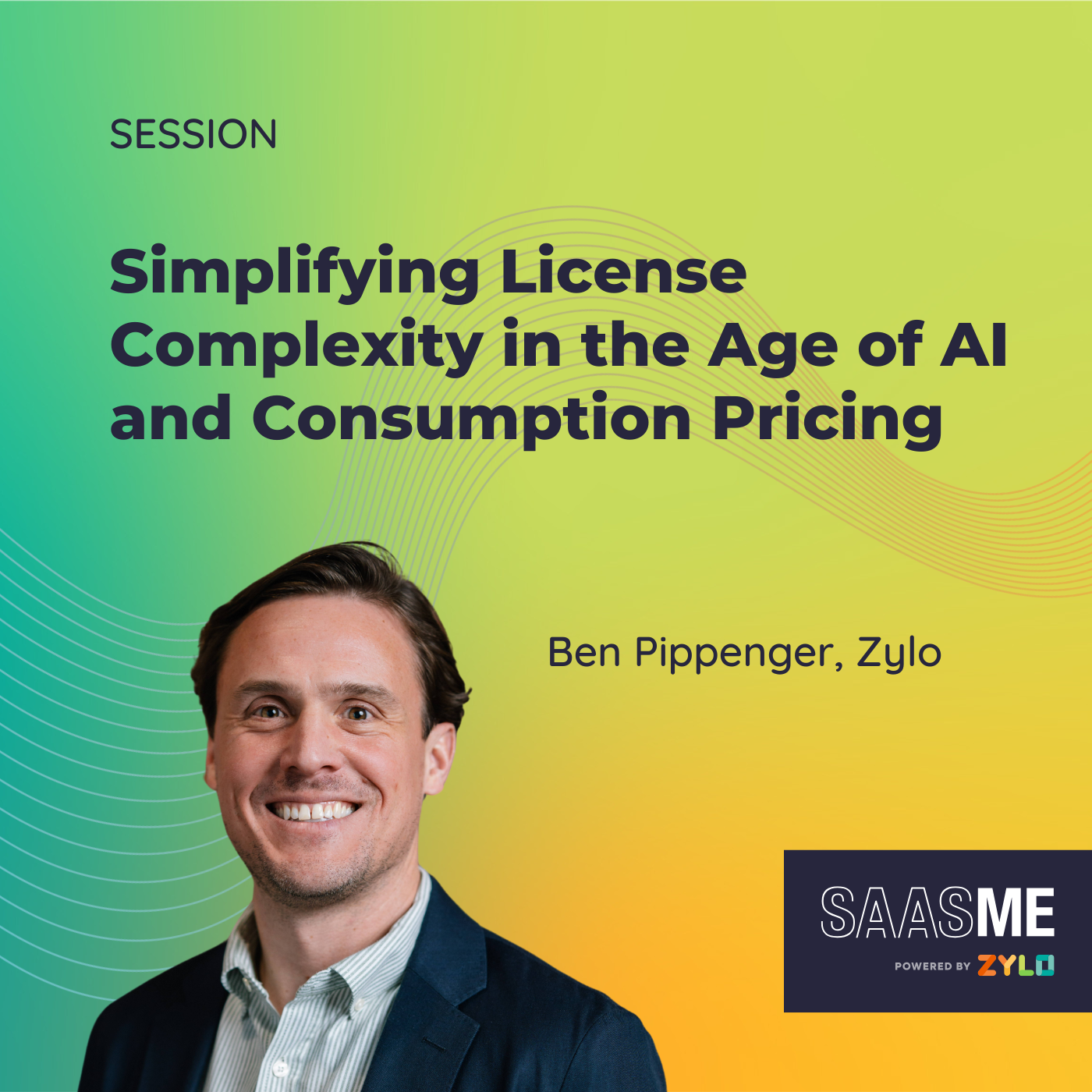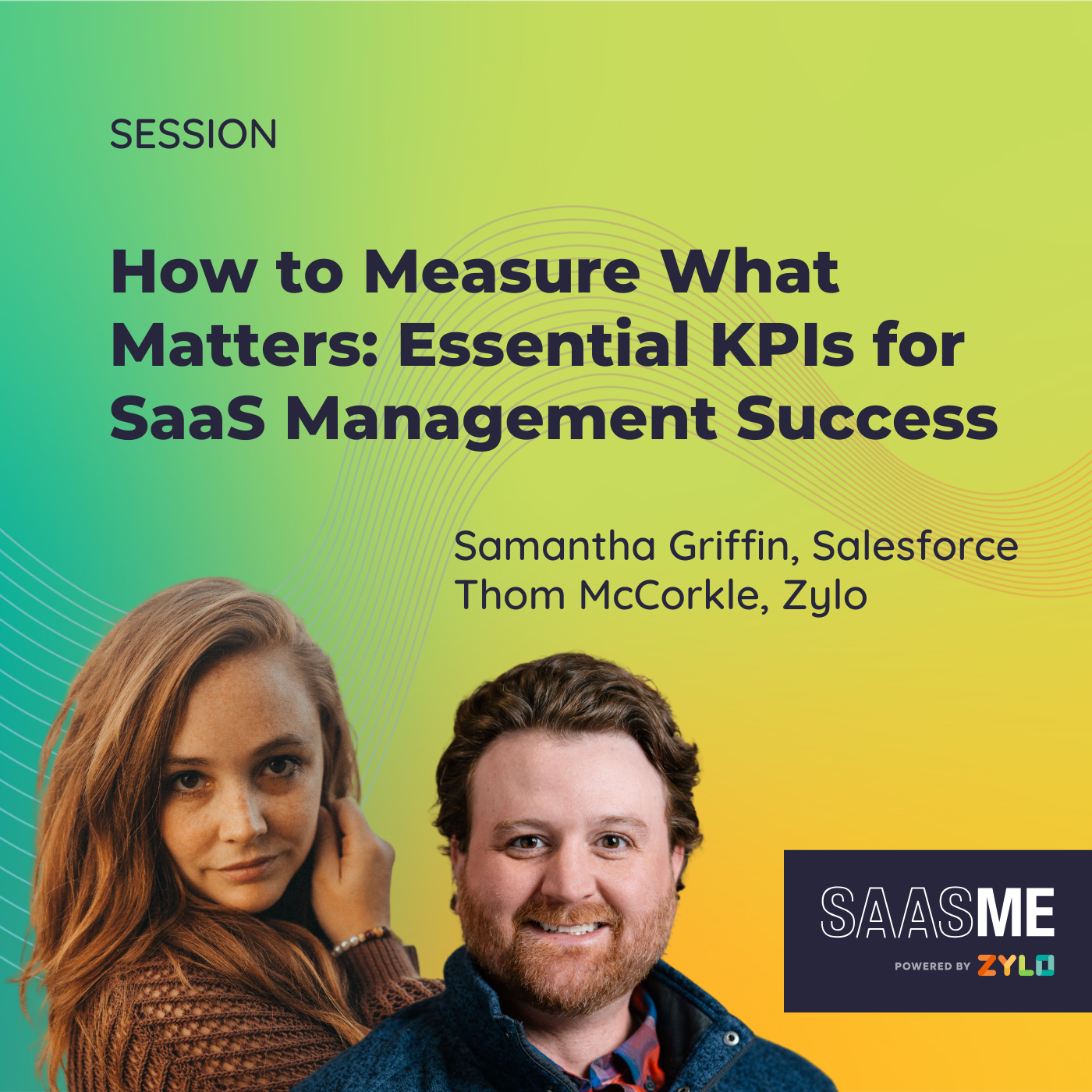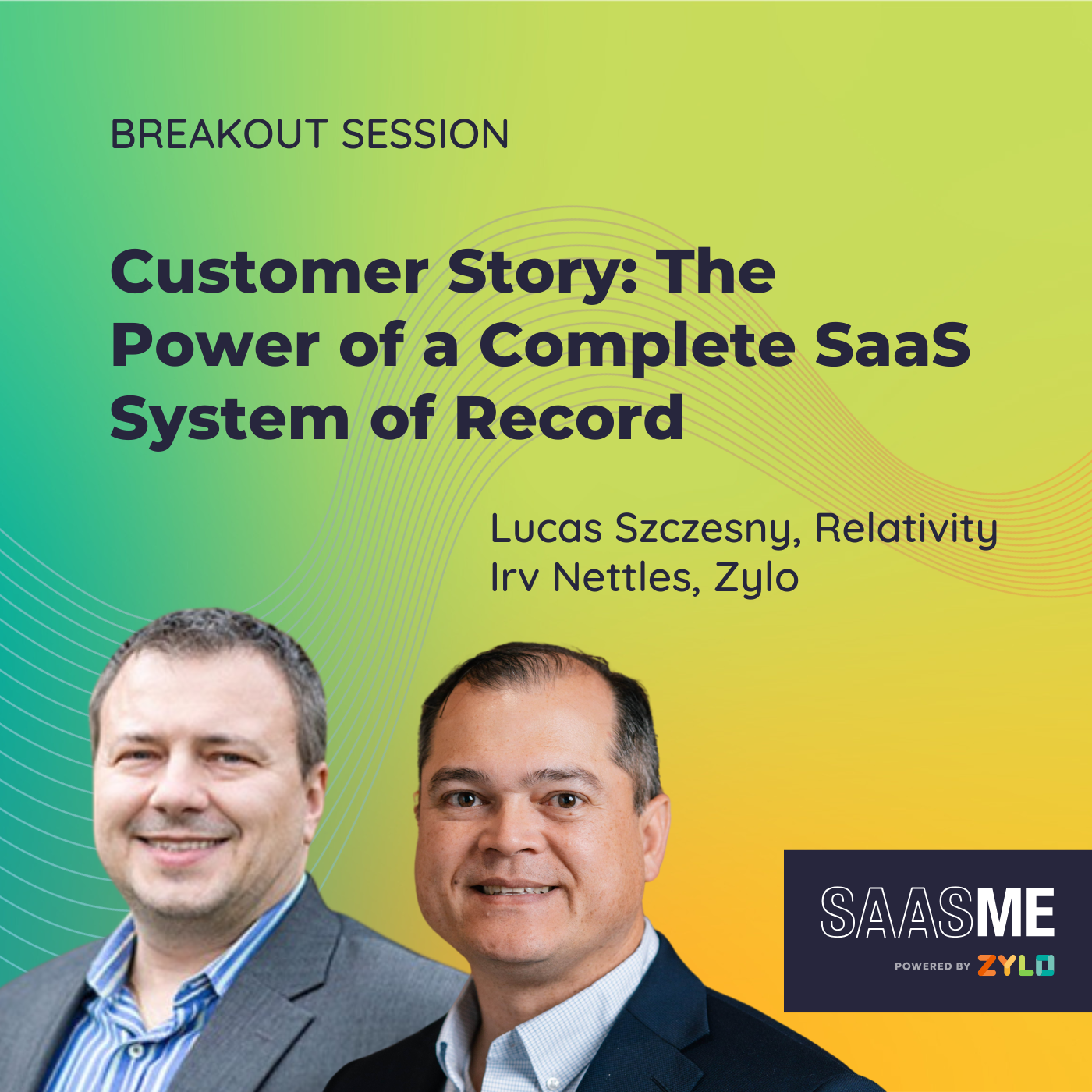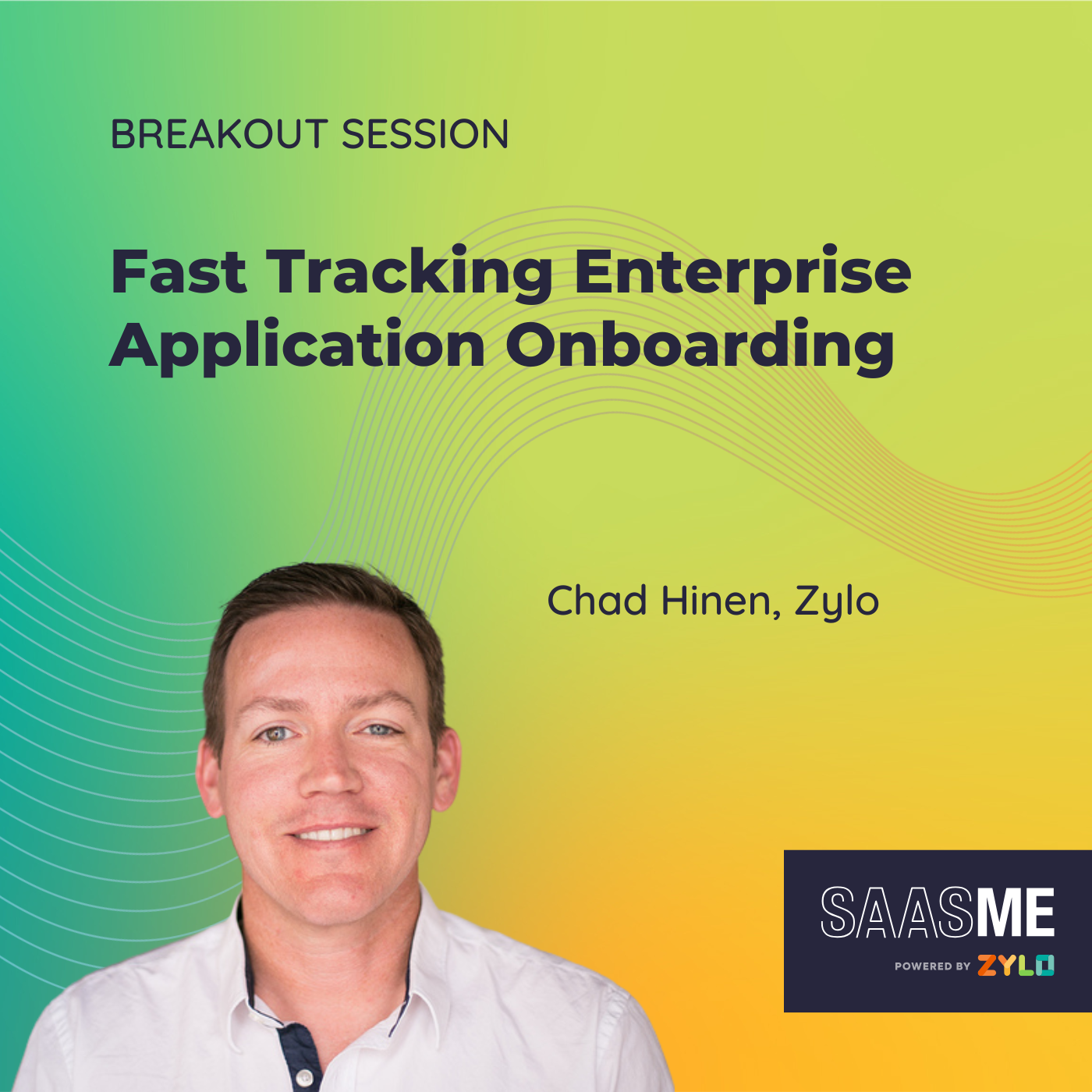Ready, SaaS, Go! A Crawl-Walk-Run Framework for Mastering Enterprise SaaS Program Management
- 0.5
- 1
- 1.25
- 1.5
- 1.75
- 2
Cory Wheeler: Hello everyone. That was a great session by Gartner. Now we are very excited to talk through Ready, SaaS, Go: A Crawl, Walk, Run Framework for Being Able to Master Enterprise SaaS Management Within Your Business Today. I'm Cory Wheeler, Chief Customer Officer and co- founder here at Zylo.
Ben Pippenger: Hey everybody. Ben Pippenger here. Also, co- founder with Cory and Chief Strategy Officer. So I'm going to take a couple of minutes here and just quickly recap what we just heard from Tom's keynote from Gartner. And I think this was just such a great keynote and it speaks to a lot of the things that we really care about here at Zylo. Number one, the pressure is increasing. Every company everywhere, almost of any size is feeling the pressure around SaaS and SaaS management. And Gartner's numbers, that they share during their keynote reinforce that, number one, SaaS spend continues to grow at 25% year over year. So it's a growing area of any organization's operating expenses. It's something that really needs to be focused on. Number two, Gartner's estimates say that there's 30% of license waste. That's in the same ballpark as what we say within our own reporting, but license waste is a huge blind spot for lots of companies today. And then you layer on top of that, the fact that there's risk. Gartner's numbers show that if companies don't have an SMP in place, they're five times more likely to a cyber incident. So the pressure is there, it's increasing, it's time to do something about it.
Ben Pippenger: Then laying out the benefits of what SaaS management can do for different organizations. Number one, provide you with increased visibility so you know what apps are out there. There's no longer this blind spot in this unknown of what's going on from a SaaS perspective. Number two, increased SaaS ROI. Everyone's looking to save money these days. ROI and SaaS is a great way to lean into that to get more return on your investment for your SaaS applications. Number three, cost efficiency. SaaS management helps with cost efficiency. Number four, increased collaboration across your business, getting away from silos, breaking those down, having collaboration within different groups, cross- functionally within your organization. And number five, increased security. Obviously this is a big focus for lots of organizations today, something you need to be focused on.
Ben Pippenger: So the real thing I see a lot of organizations today struggling with is, how do we get started with this? And I love that Tom laid out an action plan within the next 30 days, being able to establish accountability and also start to recruit partners across your business. And then within a 90- day window, really start to focus in on getting that visibility so you know what's going on from a software perspective, aligning app owners across your business, optimization of that huge waste area around your SaaS licensing and starting to think about how you rationalize your application. So really good stuff there around what it means and how to get an action plan going. But I still think our session today is going to put a little bit more meat on that bone, Corey, really focusing in on how do I do this? How do I get started with a plan like that?
Cory Wheeler: Thanks Ben. That was a really good overview of Tom's presentation, but that now leads us to how do we begin. It's pretty daunting to think about within your business today. Well, you need to think about SaaS management within a model that is consumable. You need to understand where you are today and then map out where you're going and what that looks like, which is different for every single enterprise. So we're very excited to introduce the Zylo SaaS management framework today, which is a model or that consumable framework to allow you to prioritize and plan your SaaS management strategy in your business, and then execution themes and tactics that are relevant to your company. So for this session today, Ben and I are going to walk through a role play to outline the Zylo SaaS management framework. Ben is still going to be Ben, but he is now going to be the CIO at Vandelay Industries. So Ben, thank you so much for joining us today. He is our award- winning progressive chief information officer at Vandelay. It's great to meet you, Ben.
Ben Pippenger: Thank you, Cory. I am so excited to be here to learn more from you, talk about some of the challenges that we have at Vandelay today, and it's going to be a great session. So looking forward to it.
Cory Wheeler: Thanks so much, Ben. Well, Ben, can you provide us really start with an overview of your role internally as a CIO at Vandelay, and then maybe dovetail that into a little bit more around SaaS today, your SaaS challenges and part of the conversation that we're leading to talk about where to begin and prioritize.
Ben Pippenger: So Cory, I was hired on Vandelay back in 2019, 2020 timeframe. And really when I came on, the organization was focused on digital transformation and the IT organization was really working to supporting the business to do that. Within the scope of Vandelay and within my role at Vandelay as CIO, there's different functional areas that I help with that I'm responsible for. Security roles to me, so really thinking about how we keep our business safe, secure, and protected. That's a really important part of my role. Second, asset management, including software asset management, understanding how our employees and our organization are using the assets that we buy and if they're effectively using them or not. IT operations operationally supporting the business with making sure the apps are available to them, that people are getting access to the applications that we're supporting our team and the applications that they're using. And then on top of that, we do own a large percentage of the applications at our company. So when we really think about the apps that IT owns, it's a lot of those birthright applications as we call them within our world, where it's the apps that people get for being part of the company, the wall- to- wall deployments of applications across our organization. So they're really important. They're high spend applications, and my team is directly accountable and responsible for those. So as I mentioned, when I joined the company, we were going through a digital transformation. We were really thinking about how we get our team enabled, how we move everything to the cloud, how we get away from on premise. And what happened was we hit Covid. Covid changed the game, it changed the game for CIOs. It required us to really think quicker, move faster, transform like we hadn't done before. To be able to enable our workforce to work from home in a hybrid environment. And so it really was a challenging time, but honestly it pushed us and got us to, I think, a better state, faster than what we could have gotten to ourselves just with our normal process. So it was a good transformation from that perspective. But as we think about, as we came out of the pandemic and we look at what's changed since then, well, one of the things we did to accelerate our move to hybrid was we bought a lot of software. We really enabled end- to- end employees and users to get their jobs done the most productive way that they could given the circumstances that we were in. And now looking back, we're at a point where we know we're spending too much. We know if we look at our spend trends, they spiked crazy during that timeframe, and we really need to come back around and figure out how we solve that. I mean, those are just a bunch of challenges that now exist in our business because of that. Number one, visibility. I really have big problems understanding what's out there, what people are buying, what tools are being used. It's become a big, big problem for our company when people look to me to have the answers to all these questions and I don't have them. Second is licensing waste. I know there is waste everywhere. I know that we're buying more licenses than we need. I feel it. I see it almost every day, but I really have a hard time understanding how to get my arms around it. Next is renewal sprawl on top of the visibility challenges. That means all these different people are now owners of these applications across our business. And I really don't know when our renewals are coming up. I really don't know how I need to support the business from an asset management perspective as we're hitting those renewals. And I feel like my team and I are dropping balls here. And then lastly, risk. I mean, this is one of those parts of my job that if something happens, it's typically a really big deal. And SaaS applications come with a lot of risk. Our employees are putting information in there, they're running parts of their jobs within these applications. And I just really, really need to know what's going on. And to be honest, I'm a little lost. I've always felt in my career, I knew how to solve problems and get ahead of things, but in this case, Cory, I'm not really sure where to go. I'm not really sure what to do. I'm not really sure how to inform my team. I just need some help here. So I'm just looking forward to our conversation today to hopefully get through some of these topics.
Cory Wheeler: That makes a lot of sense, Ben. I think you're in a very similar position. The era of responsible growth for enterprises is upon us. And so now that you have all of these assets, you've got a really distributed category software across your business, it's completely understandable that the pivot now to responsible growth, efficiency and optimization is paramount for every single enterprise out there today. But it is challenging. It's challenging to get your arms around this and try to really embark on that journey around SaaS management. Implementing a program. How are you really driving the overall prioritization of the program? When you look at software across your business, it is very, very distributed. So understanding who internally in your organization is responsible for software, for the life cycle around software, it's a confusing place to start. And that's because SaaS management today is new, relatively. Most companies, most enterprises have not built a program. They're not iterating on top of that program year over year and tweaking metrics. They're beginning from square one. So you are 100% not alone. And as I mentioned earlier, SAS is fundamentally decentralized. IT, your role as the CIO you mentioned earlier, you own those birthright applications, but truly all of the SaaS sprawl, hundreds if not thousands of applications across your business are owned by everyone across the business. So your functions, your departments, your individuals, they're now an owner and a renewer and a purchaser of software inside your business. And it definitely requires that cross- functional approach from your peer play IT organization, your software asset management teams, and then finance teams and procurement teams, really to build that aligned plan and strategy for being able to tackle SaaS management. It's a challenge to identify all the owners of SaaS management across your organization and get them rowing in the same direction. So it requires that cross- functional effort to begin with. And as I mentioned earlier, getting started, where to even begin, there are so many components of SaaS management. It's tough to figure out where to put your finger and begin that journey. And finally playing into that decision on where you're beginning, expectations, KPIs and value have to be defined. So how do you measure the value for your program once you get up and running?
Ben Pippenger: Cory, looking and hearing you talk through each of these individual challenges, we've tried to solve this problem multiple times with my company, and I can literally think back when we've hit roadblocks around each of these that you just called out. So you're making me feel what you're saying here, so I definitely want to hear what you have to say here to learn a little bit more about how I can get over these challenges and potentially solve some of them.
Cory Wheeler: All right, well, let's get into it. Let's talk about our Zylo SaaS management framework. So given the challenges that you and other enterprises are facing today around SaaS management, we've created this framework designed to break down SaaS management into consumable ways to build your strategy, focus on what's most important, and then define your program and roll that out. And so we're going to talk about these four fundamental underpinnings of the SaaS management framework today. We're going to begin with disciplines. The top level of SaaS management. And disciplines really represent that sphere of activity. Every organization that is adopting SaaS management today will organize activities within this overall discipline. And those disciplines are very straightforward. We'll then go a level down from disciplines and talk through the capabilities. What are all of the different capabilities that roll into a discipline that allow you to not only understand the themes of where you're headed, but then start to build those work streams to execute on those overall disciplines? Within each capability, we'll then take one more granular step down and talk to those individual work streams, the components, the tactics that comprise each one of those capabilities. And it definitely wouldn't make sense if we were talking about that three tier of structure without talking about KPIs. So what are you measuring that effectively manage and measure those outcomes, that track that progress within your organization? That allow you to say, " We understand where we're starting. We know the components and the capabilities that we've selected to prioritize and how we're going to get there, and now we know exactly how we're going to manage that." So Ben, does that kind of make sense at a very high level when we talk about the overall framework that we're going to walk through?
Ben Pippenger: Definitely. I think framework makes sense. I've seen similar things before with other capabilities. So makes sense. Let's keep going.
Cory Wheeler: All right, perfect. Well, there are three disciplines within SaaS management today. Successful SaaS management starts here with each of these disciplines. That first discipline, inventory management, really visibility into every single application, centralized visibility that allows you to understand all of your application inventory. It allows you to understand the spend behind all of those tools and start to prioritize outcomes there. And it really provides that central, comprehensive system of record that allows your distributed teams, whether it's your IT teams or your finance teams, to really centrally manage this overall strategy of SaaS management. It's categorization and understanding your applications as well. And a full system of reporting to power the next two disciplines of SaaS management. And that next is license management, really ensuring that you understand the utilization and usage detail for all of your core applications. Measuring the application usage, maximizing the efficiency of not only your employees, but also the licensing that they're holding and driving adoption to your core platforms and programs. CIOs often tell us, " When I understand the usage and utilization of these tools, I can finally begin to map the value of these tools within our organization." But then finally, the last discipline of SaaS management, renewal management. All of these applications are renewing. Most are renewing once a year, some of them are renewing every two to three years. But that SaaS lifecycle requires that you understand all of these renewals and that you build a program around each of the renewals that are happening. Because the ability to affect a SaaS application, to pull back licensing, to look at your overall commercial terms, to introduce new security requirements, that happens at the point of renewal. So really understanding those three disciplines is core to SaaS management, inventory, license and renewal management.
Ben Pippenger: Cory, I think that makes sense. It sort of encapsulates, I guess all the different sort of stages of an application and the lifecycle within a business. So I can see for sure how this can fit into our business. I think it's consumable how you've put it out there into these three buckets, but let's maybe dig into one a little bit more. License management I think is... When I think about some of the stats I've read out there, 30% of licenses are wasted. It seems like it'd be a good area. And when I dig into that and I get my head around, " Okay, what is license management?" Well, I think about here at Vandelay, what our deployments look like. I'm just going to pick one of the apps that I own. If I think about Salesforce, Salesforce is a massive deployment here. I have a hard time.... We've got teams in place that are working to manage Salesforce or logging into the admin panels and understanding what usage looks like and pulling reporting down. But we still have big challenges with it. It's all manual for the most part. You really have to know what you're doing when you're in there to figure it... I got to be a Salesforce expert to be able to go in there and find the reporting. And then on top of that, we've got multiple orgs that we're reporting against for Salesforce, and I'm trying to really understand how does this org interact with that org? I have an opportunity sometimes to swap licenses between organizations. Just with that one application alone, I got to really understand what does my full license position look like? How does that align to my contract and my entitlements that I purchased from them? Pairing that up with the reporting I'm able to get, and then trying to align that to a certain date to be able to do some true up and license swapping across these orgs. So it's crazy. It is a big, big challenge for us. Tell me a little bit more. Am I in the right ballpark here for... When you say license management, is this what you mean? Are these the problems that you help solve with this discipline?
Cory Wheeler: That's exactly what I mean, Ben and I love how you articulated that. There are many different challenges that every organization is facing. License management is still kind of a high level topic. So when we think about license management, we want to then talk to what comprises license management in the business today and your context around the urgency of SaaS management, Ben, at Vandelay was fantastic. So that next level down are capabilities. So capabilities today, each discipline in the Zylo SaaS management framework is supported by these capabilities. A great way to think about these are individual value work streams supported then by components and KPIs underneath that. That drive to these programmatic SaaS management outcomes. So as we look at license management capabilities today, the number one capability that we talk about is license optimization. And you walk through one application and how you're thinking about optimization, but it really feeds into additional capabilities that all roll into license management as well. So license optimization is optimizing clearly. But being able to keep your licenses highly adopted, tracking those internally, and then right sizing and pulling back licenses that you no longer need. It's then mapping that to savings, tracking and reporting. So understanding where you're pulling back costs and pulling bottom line cost savings, hitting your OpEX reduction targets. It's looking at avoidance where you're pulling back unused licensing so that you're not purchasing new licenses' month over month or quarter over quarter. A lot of internal teams that we've spoken with, Ben, those core applications, they're running chargebacks around those out to the business. Where maybe a central IT team is owning quite a bit of the applications internally, looking at license usage, then charging back each individual business unit. And maps down into a cost per user view within each organization as well. And what we're hearing from IT leadership is, " I need to understand the cost from department to department of every individual in the business and start to look at that in aggregate to know the software lift on top of every employee that we need to expect here in the business." We're being caught by surprise quite a bit there. And then finally, an employee application catalog. So driving employee efficiency, showing employees what applications are available to them so that they can request those applications without spending the time needed to research tools and to go out and buy all of these software titles directly on their own because they just don't know where each of these software titles are to be able to request those internally. So as you evaluate license management at the highest level, Ben, within these capabilities, which are most important to you at Vandelay?
Ben Pippenger: Cory, the interesting thing as you went through all of these, my eyes were opened a little bit to the fact that when I was thinking license management, I was thinking license optimization, but this is a huge discipline and we are doing some of these other areas and pockets, but I could definitely see how a well- thought- out, mature program around license management would be executing fully across all these. But to answer your question specifically, I got to say license optimization. When I look at the opportunity that's in front of us, in the stage of where I see us at, I think this is the biggest thing that we can go after, the quickest. I shared the example on Salesforce and how we're doing that today. We have people that are doing that. We're solving that through people and process. But I think there's a big scale issue there, and I'm sure there's some stuff that we're missing that you guys or platform like yours could help us out with. So I got to say license optimization would be where I would want to get started, but how would you say begin there? What would your perspective be on where to get started?
Cory Wheeler: That's fantastic. So let's dig into license optimization and start to uncover what those tactics are that you're executing as a part of license optimization. And I'm going to introduce the concept of components that you see over on the far left here. These are each of those tactics that comprise license optimization. Number one, it is getting visibility into the usage and utilization data across all of your applications. It's then ensuring that you've got contract coverage so you know when every SaaS application is coming up for renewal so that you can act on those licensing insights. Next, it's the adoption strategy. Setting your overall strategy as a CIO for where you want to be across your applications. Is that truly having a 95 to 98% utilization percentage across all of your applications? Is it breaking down your applications into different departments or outcomes in your business and putting a line in the sand out there for what is good from a usage and a value perspective? And what's an opportunity for you to go after as you're looking to maximize every dollar spent and every license utilized? And then finally, it is operationalizing that license reclamation process within your organization tightly to the overall renewal structure, but ensuring that for each application that you've got a strategy to be able to pull back licenses that aren't being used, that are maybe still being held by employees that have left your company. These components are those tactics that you operationalize with your internal team. Then we overlay that with your approach and your overall phased approach that you're looking to execute on. And across the top here, you can see a phase zero to a phase four. It's all defined by where you're at today and where you plan to go. So for license optimization, you'll notice that the phased approach really comes down to in phase one, getting your arms around your tier one license optimization strategy. Well, what does tier one mean? Well, tier one apps are typically those IT owned applications. And starting there allows you to be able to manage those owned applications first. You probably know those application owners. You're able to get that centralized utilization data and you're able to prove out the value of a centralized license optimization strategy and then expand from there. Typically, our customers begin right there out of the gate to be able to draw those wins and then figure out how they want to move that out to the rest of the organization. Tier two apps, you'll see those in the phase two here. Those are your applications that are those large core applications, probably outside of IT's ownership, where in addition to your own managed apps, you want to understand the license utilization and strategies for pulling back unused licenses for those core applications. And finally, phase three, the run phase of that overall maturity curve is every application across your business, centralizing that utilization data, running a license reclamation process to pull back unused licenses. That's truly the ideal state of where SaaS management can lead every single organization. So Ben, as you outlined your business today and those SaaS challenges that you're facing at Vandelay, it feels like you're in the beginning of your journey. So I would probably put you right there in the phase zero, the sit in the sit, crawl, walk, run approach. I think that's where you're at today. Help me understand phase one, two and three. Where do you want to go from a license optimization perspective?
Ben Pippenger: Cory, this again makes a ton of sense around how to do this capability. When I think about just getting visibility and contract coverage and adoption strategy and the process around operationalizing all that, it really makes sense. So I agree with you. I think we're in phase zero here. We're doing our best here with a handful of applications to do license optimization. I would say I typically like to think in 18 to 24 month roadmaps for myself and my team, and I see us getting into phase two within that timeframe. I think phase one, those are applications that I'm responsible for. Those are apps that team members are already experts around for the most part. I feel like we can get through a lot of these components in phase one the crawl phase pretty quickly for those applications that I own. And the good thing about that too is as I get through those and we start to see some wins and we start to see how this works, and I guess some experience across our team, I'm going to be much more able to then take this out to other leaders within the organization for apps that I don't own and be able to talk through, " Hey, look at what we're doing. We've implemented this tool. We've put a new process in place around the SaaS management framework and the results speak for themselves on what we're able to accomplish and really line back up, I think, to some of the core challenges that I outlined earlier. So I see our organization here getting into phase two in the next 18 to 24 months. I think that's something that we could definitely do with this framework. I think phase three for us might be a little... I'm not sure we get there. It might be too much for our company. I think about how big we are. We're global. We've got offices all over the place with different processes and procedures in place. So I think my goal is going to be getting to phase two in the next 18 to 24 months.
Cory Wheeler: I think that's a sound plan, Ben. Now that we understand where you're at, I think driving wins expansion from there. And then thinking about your comprehensive app strategy for phase three down the road, having a good 18 to 24 month strategy with your teams is right where you want to be. And I think that's very reasonable to say you'll build out value in phase one, use that to grow into phase two. But as you're thinking about then how you're getting to phase two, you've got to be able to measure those outcomes around license optimization. Now, it needs to be simple, straightforward, measurable, and achievable, all of those fun terms around goal setting, but you really do need to make it an overall KPI story that is understood by the business, is understood by your teams and you're able to execute on. So when we think about what that license optimization strategy is, it's really quite straightforward. Three core KPIs for you to think about as you are setting your program up for success. The first is application utilization coverage. How many applications have you pulled the centralized utilization detail for into your centralized SaaS management platform, into Zylo directly, mapping out your phase one apps in your phase two apps, and then setting a target for centralizing that utilization data gives you utilization coverage that then powers your overall program. And then the next two metrics are very straightforward. How many licenses have you been able to pull back from the business that maybe are held by employees that have left the company? Employees that aren't using the software anymore? Many employees don't even realize they're holding licenses for applications that they're not using every day. Setting up this programmatic structure allows you to pull those back and drive to a very high utilization rate across all of your core applications. But then lastly, it's the age of responsibility and responsible growth in every enterprise. It's mapping out cost avoidance and savings. Cost avoidance might be licenses that you pull back that aren't being leveraged, that prevent you from having to purchase more licenses quarter over quarter. It might be cost savings where you're driving this activity right before the renewal, pulling down your overall license counts, reducing your OpEX and driving bottom line savings. So when we think about these overall KPIs, simple, straightforward, powerful and impactful KPIs that allow you to set the direction for how your program is going internally. Does that make sense?
Ben Pippenger: It totally makes sense, and I think not only allows you to set the direction, but I think it allows you to prove this out in a way that makes sense to the business. If I'm able to take these key KPIs for this capability and show how we've accomplished this, man, that is a huge, huge step forward for our company and really I think allows me to open my eyes up and really understand how I can be doing SaaS management. I think about those challenges we talked about at the top of our time together today, Cory, and I know we went down one capability here around license management and license optimization and really thought about how that can be implemented at Vandelay and what I can be doing here to drive real change for our business. But man, I think I can now start to get my arms around and grasp what a full SaaS management program looks like. If I'm able to look at one capability and think about how that can be implemented in my business and where we can start to drive successful results and share those results across the organization. I think I'm starting to get it. I think I'm starting to really see the light here a little bit, and my eyes are opened up.
Cory Wheeler: I love it, man. I think the next step for you and I is to sit down, walk through those overall disciplines, the remaining disciplines, walk through those capabilities and start to prioritize each of those capabilities and components within your business over the next two to three years. Thanks so much for the activity today, Ben.
Ben Pippenger: Yes, thank you, Cory. That was a great use of time for sure.
Cory Wheeler: And scene. Thank you so much, Ben from Vandelay. As we wrap this up, the role play that Ben and I were able to do really outlined some of the challenges that Ben's seeing today, how he can start to get his mind around SaaS management and a programmatic approach to it, all the way down to granular tactics that lead into this overall structure. So when we take a quick step back and look at that full picture of SaaS management, the framework begins with those three disciplines. And then walking through and understanding each of those capabilities within that discipline and mapping out where you are today and where you want to be and the why behind each one of those. Remember, that's different for every organization depending on where you're going and what your maturity level is internally to be able to execute SaaS management at scale. On behalf of Ben and I, thank you all for joining us today for this overall conversation about crawl, walk, run for SaaS management. Thanks, Ben.
Ben Pippenger: Thank you. Thanks Cory. Thanks everybody.
DESCRIPTION
Start small, win big in SaaS Management. Zylo's Crawl-Walk-Run framework helps you conquer SaaS, one small step at a time. Discover how to build a strong foundation and adopt advanced strategies for long-term success, ensuring your program scales effectively.
Speaker(s):
- Cory Wheeler, Co-founder & Chief Customer Officer at Zylo
- Ben Pippenger, Co-founder & Chief Strategy Officer at Zylo



